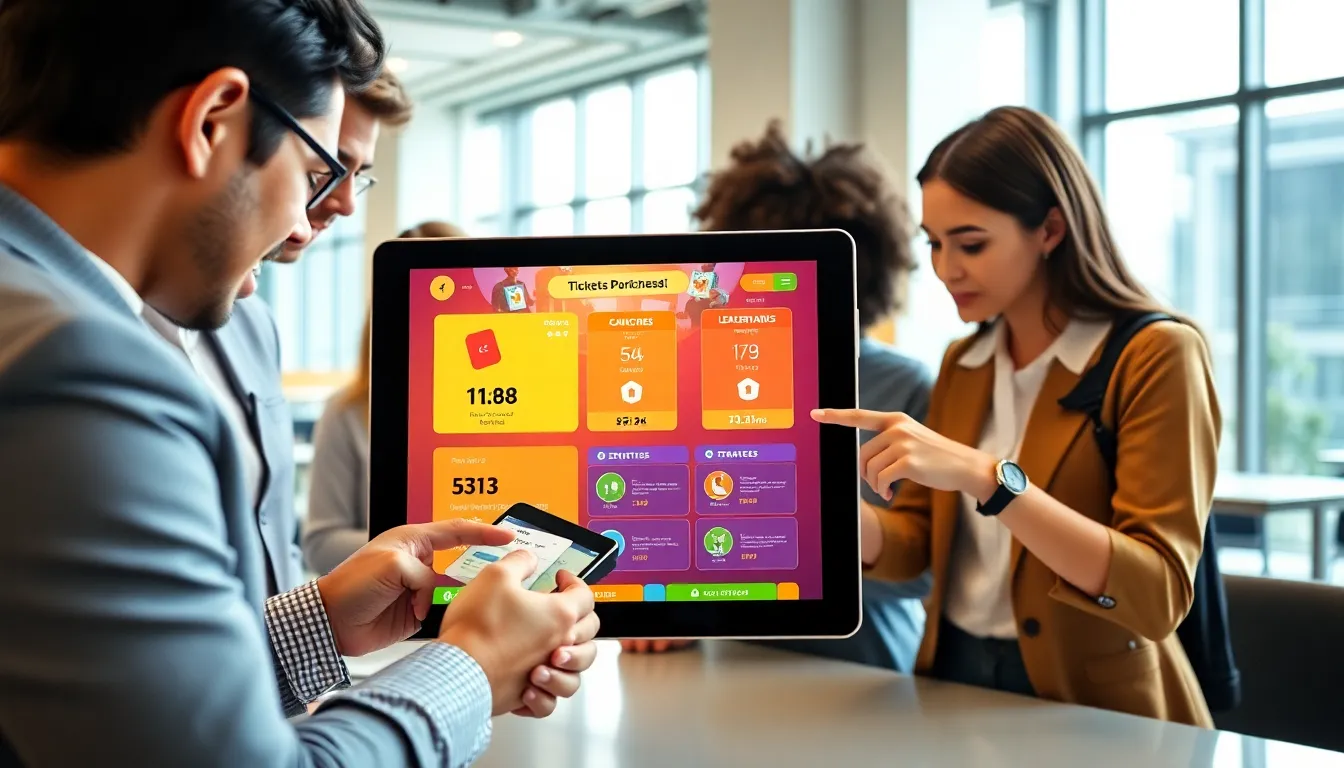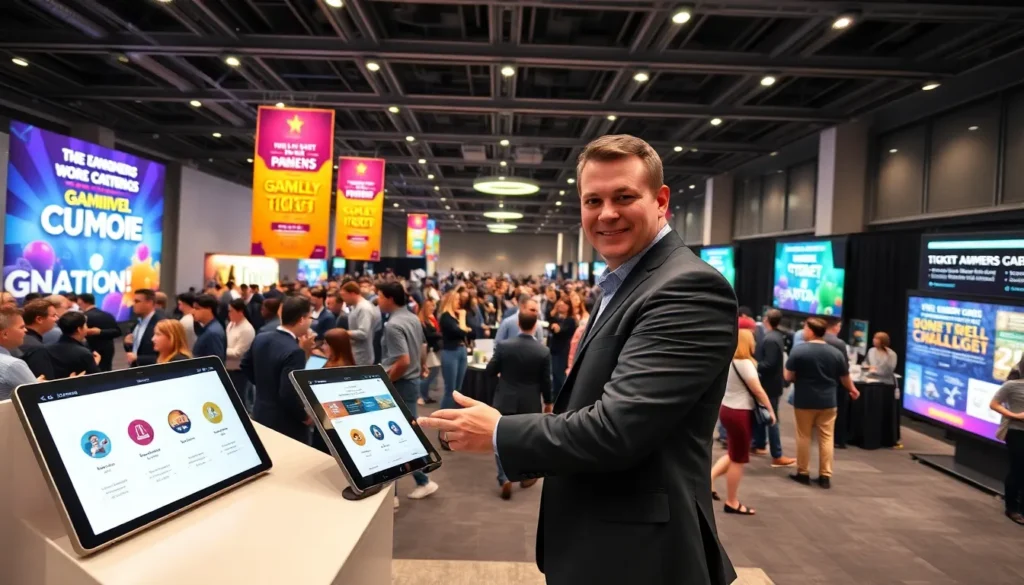Imagine a world where buying tickets feels like playing a game, not just a chore. Welcome to the realm of ticket gamification, where excitement meets practicality. This innovative approach doesn’t just spice up the experience: it increases engagement and enhances loyalty. From unique rewards to interactive platforms, ticket gamification is revolutionizing the industry. Buckle up as we explore the essentials, benefits, and top resources you’ll need to dive headfirst into this thrilling domain.
Table of Contents
ToggleWebsites for Ticket Gamification Summit

Ticket gamification refers to the integration of game-like elements into the ticket purchasing and event attendance process. This trend leverages the psychology of gaming to enhance user involvement and satisfaction. It can include features like point systems, interactive challenges, and leaderboards that encourage participants to engage more actively.
The aim is simple: make the ticket buying experience less transactional and more engaging. Users aren’t just purchasing a ticket: they’re embarking on a journey filled with enjoyable challenges. Through gamification, organizers can turn mundane ticket processes into thrilling quests, ensuring that attendees feel invested and excited.
The concept has gained momentum in various sectors, and today, it’s increasingly relevant in live events, concerts, and exhibitions. The integration of game mechanics into ticketing is an excellent strategy for boosting excitement and participation.
Organizations are tapping into this trend to foster community, retain customers, and offer a far richer experience compared to traditional ticketing.
Benefits of Gamification in Ticketing
Incorporating gamification into ticketing schemes provides a wealth of advantages. First and foremost, it significantly enhances the customer experience. Attendees enjoy a more dynamic interaction, transforming what may have been a simple purchase into a rewarding activity.
Also, gamification drives customer engagement. With competitive elements like reward points and challenges, users are more likely to participate actively. This increased engagement typically correlates with higher attendance rates and ticket sales.
Also, gamified ticketing solutions generate valuable data. Organizations can analyze engagement patterns, enabling them to tailor future offerings to better meet customer needs. This data-driven approach not only boosts efficiency but also ensures a more personalized experience for users.
Finally, a well-executed gamification strategy can significantly increase brand loyalty. When users feel valued and rewarded for their participation, they’re more likely to return for future events.
Top Websites for Gamification Resources
Several websites offer exceptional resources for organizations looking to investigate into ticket gamification. Here are a few to check out:
- Gamification.org: This platform boasts a wealth of information about gamifying various processes, including ticketing. Here, users will find case studies, research, and best practices.
- Bunchball: As a pioneer in gamification, Bunchball provides insights into implementing gamified strategies effectively.
- Gamify.com: This site offers tools and templates specifically designed for gamifying ticket sales, making it a must-visit for event organizers.
- Eventbrite Blog: A treasure trove of tips and tricks is available here, focusing on enhancing customer engagement through gamification in the event space.
- Mindset: This site offers detailed insights into gamifying user experiences, with a focus on ticketing. It’s a great resource for actionable strategies.
Case Studies of Successful Ticket Gamification
Examining successful case studies can provide invaluable insights into effective gamification strategies. One notable case involved a popular music festival that integrated a leaderboard system into their ticketing process. Ticket buyers earned points for each ticket purchased and for engaging with the event’s promotional content, resulting in a significant increase in early ticket sales.
Another great example comes from a sports franchise that introduced a rewards program for attending games. Fans earned points for attending matches, with the points redeemable for exclusive merchandise and experiences. This initiative not only boosted attendance but also significantly increased fan loyalty.
Finally, a theater company gamified their subscription ticketing model, allowing subscribers to earn points for each show attended. These points could then be traded for benefits like backstage tours or meet-and-greet opportunities with cast members. This strategy resulted in a dramatic increase in subscriptions and audience satisfaction.
Tools and Software for Implementing Gamification
To effectively carry out gamification in ticketing, organizations can leverage various tools and software. Here are a few that stand out:
- Zynga Game Direct: This platform provides a robust set of APIs for creating game-like experiences. It allows for the integration of social elements, making it perfect for event promotion.
- Kahoot.: Widely recognized for quizzes, Kahoot. can also be adapted to enhance ticket experiences through playful challenges related to events.
- Badgeville: This platform enables companies to add gamified elements, including badges and rewards systems, to their existing ticketing processes.
- Tableau: While primarily a data visualization tool, Tableau can help organizations analyze the results of their gamification strategies, allowing for adjustments and improvements based on user data.
Best Practices for Engaging Participants
Engagement is the cornerstone of successful ticket gamification. Here are some best practices to keep participants interested and excited:
- Make it Fun: Integrate playful elements into the entire journey, from the purchase process to the event itself. Use colorful graphics and relatable challenges.
- Set clear rules: Ensure participants know how to earn points, redeem rewards, and understand their experience. Transparency is vital.
- Keep it Social: Introduce community elements where users can share achievements or compete against friends. This social component fosters engagement.
- Regular Updates: Frequently refresh challenges and rewards to maintain interest. Outdated gamifications can lead to disengagement.
- Seek Feedback: Regularly ask participants for their opinions on the gamified experience. Use this feedback to refine strategies and make improvements.




